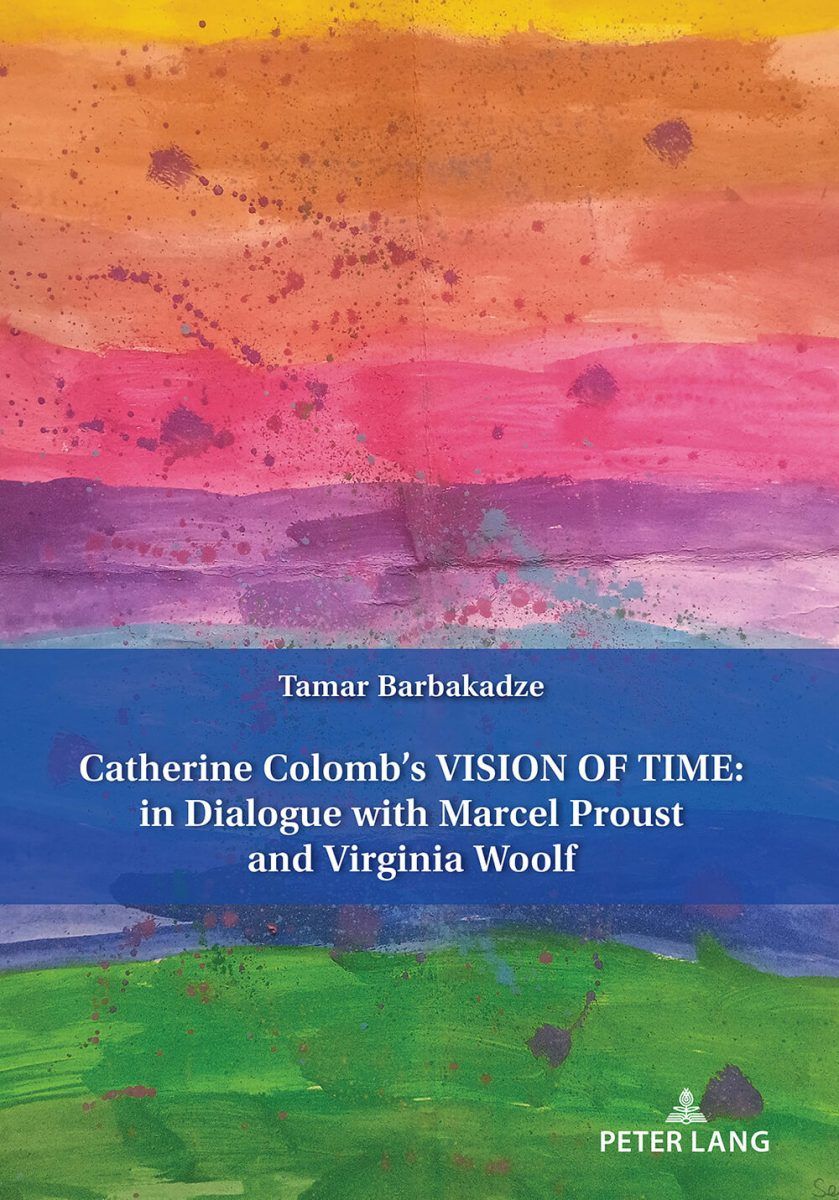
Tamar Barbakadze, Catherine Colomb’s Vision of Time: in dialogue with Marcel Proust and Virginia Woolf,
Catherine Colomb et la question du temps: conversations avec Proust et Woolf.
La romancière suisse romande Catherine Colomb (1892-1965) est au cœur de cette monographie qui interroge ses rapports à l’œuvre de Marcel Proust et à celle de Virginia Woolf. Elle vise un double objectif: d’un côté, faire connaître l’importance des romans de Colomb dans la littérature du XXe siècle en comparaison de ceux de Proust et de Woolf et, de l’autre côté, approfondir nos connaissances sur la notion du temps romanesque, sur la poétique de la mémoire et la perception.
Cette étude comparative menée par Tamar Barbakadze (Section de français) révèle des affinités plus significatives entre Colomb et Woolf qu’entre Colomb et Proust. Les deux autrices partagent une esthétique du temps, avec la centralité de la représentation de la conscience ou de la perception subjective, et un récit spatialement ordonné dans la construction de l’idée du temps, alors que Colomb et Proust présentent des affinités concernant la philosophie du temps et la psychologie de la mémoire.
Issu d’une thèse de doctorat en littérature française, cet ouvrage est disponible en libre accès sur le site web de l’éditeur.
This monograph is the first substantial contribution to the study of the Swiss novelist Catherine Colomb’s dialogue with Marcel Proust and Virginia Woolf as well as to time and memory studies. The framework and approach devised to examine Colomb’s oeuvre contribute to unravelling some of its complexities, not only in its curving style, ephemeral, and sequence-defying narrative, but also in its literary engagement with the science and philosophy that shaped modernity and proposed new ways of thinking time, knowledge, and the human experience. This thesis ultimately allows us to gain insight into the originality of Colombian time experience, memory, and point-of-view representations, transcending the alleged influence of her iconic predecessors.
Table Of Contents
Cover
Title
Copyright
About the author
About the book
This eBook can be cited
Contents
Acknowledgements
Abbreviations
Introduction
I. Time and Narrative in Châteaux En Enfance
1.1 Introduction
1.2 Review of studies on narrative and time in Colomb
1.3 Colomb’s experimentations with the temporal and narrative modes
The use of verbal tense
The ‘crisis’ of Colomb’s novel
1.3.1 The mechanism of ‘liaison’
1.3.2 Characters
1.3.3 Point of view
1.3.4 Repetition and time
1.4 The old and new narrative formulas: Colomb’s two modes of writing
II. The Aesthetics of Time & the Poetics of Memory in Colomb: in Dialogue With Proust
2.1 Introduction
2.2 Review of studies on time and memory in Proust
2.3 Colomb and Proust: The novelists of memory
2.4 Associationism vs. reminiscences
2.5 Definition of terms
2.5.1 Association
2.5.2 Reminiscence
2.6 Colomb’s associationism
2.7 Colomb’s associations vs. Proust’s reminiscences
III. The Aesthetics of time & The Poetics of perception in Colomb: in dialogue with Woolf
3.1 Introduction
3.2 Current state of research
3.3 ‘Stream of consciousness’ – definition of concept
3.4 Interrupted consciousness vs. consciousness as a stream
3.5 The aesthetics of enunciation
3.5.1 Style indirect libre – definition of concept
3.5.2 The aesthetics of enunciation in Colomb and Woolf
3.6 The ‘roman poétique’ by Catherine Colomb
3.7 Simultaneity of multiple time frames
3.8 A story within Colomb’s leitmotif & Woolf’s ‘moment’
3.8.1 Colomb’s leitmotif
3.8.2 Woolf’s ‘moment’
IV. Time in Colomb, Proust & Woolf: In Dialogue with the Air Du Temps
4.1 Introduction: modernist time
4.2 Proust and Bergson
4.3 Proust and Einstein
4.4 Woolf’s negotiations with Russell, Fry & Einstein
4.5 Colomb’s negotiations with Bergson & Einstein
4.6 Colomb’s and Proust’s search of the original contact with the world. Darwinism? Bersonism?
4.6.1 The Merovingians: Legendary times
4.6.2 The body as an actualization of the durée
4.6.3 The Durée of Experience
4.7 Modern physics and Colomb’s and Woolf’s weaving a ‘web of time’ in the perceived and unperceived worlds
Conclusion
Bibliography